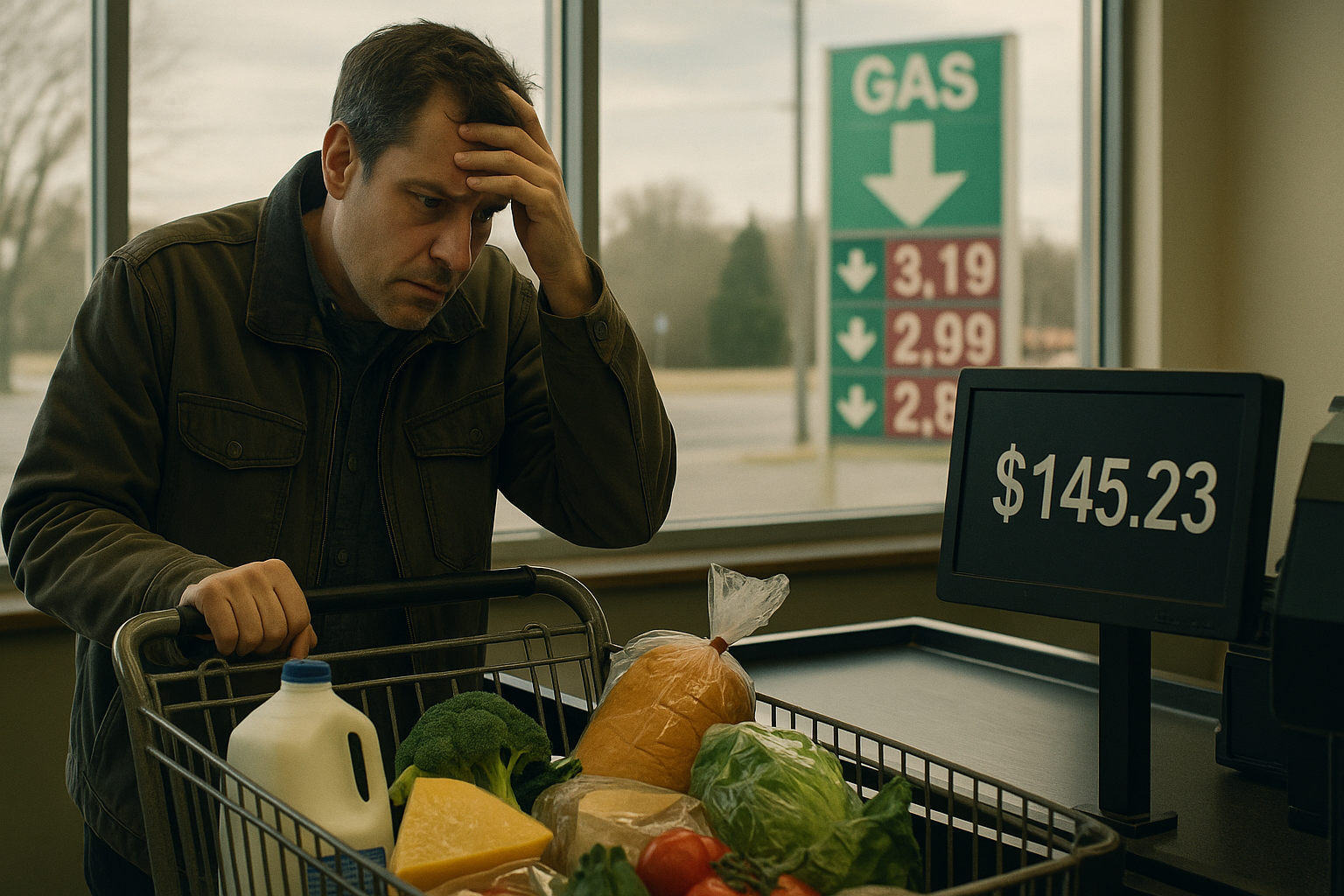I've been watching economic analysts fixate on Trump's tariff threats for weeks now, but here's the thing—they're missing the financial disaster that's already unfolding in millions of American households.
Personal debt is swallowing this country whole. And nobody seems to care.
Having tracked consumer finance trends since the 2008 crash, I've developed a pretty good eye for approaching economic storms. This one? It's not even subtle. The warning lights aren't just flashing; they're practically strobing.
Let me paint you a picture. About 61% of Americans—that's nearly two-thirds of us—are currently living paycheck-to-paycheck. This isn't just happening to minimum wage workers, either. I've interviewed families making six figures who are one unexpected medical bill away from financial collapse.
The Debt Machine Has No Off Switch
The modern American consumer isn't just cash-strapped; they're trapped in a financial structure with almost no wiggle room. Unlike their parents or grandparents, today's adults are carrying historically unprecedented levels of fixed, unavoidable debt.
Student loans? A staggering $1.77 trillion. Credit cards? Recently hit $1.13 trillion—a record high. Auto loans are sitting at $1.6 trillion, and don't even get me started on housing costs.
Look, when your mandatory monthly expenses eat up nearly everything you make, any financial hiccup doesn't mean canceling Netflix. It means not paying something essential.
I spoke with Melissa, a dental hygienist in Cincinnati, who told me she's been playing "bill roulette" for the past year—deciding which payment to skip each month while hoping to catch up later. She's never been able to catch up.
Three Doors, But Only One Is Open
When people get financially squeezed, they typically have three options:
- Make more money
- Spend less money
- Stop paying their debts
The problem? Doors one and two are increasingly locked for most Americans.
Making more money sounds great, but it's not exactly simple. Meaningful wage increases require time, education, or opportunities that aren't readily available to most people (especially those already working multiple jobs).
And spending less? Well... what exactly are they supposed to cut?
I remember talking to a financial advisor in Dallas who laughed—actually laughed—when I asked about traditional belt-tightening advice. "I have clients who've already cut their streaming services, stopped eating out, shop at discount grocers, and haven't taken a vacation in years," he said. "What else should they give up? Electricity?"
This leaves door number three—default—as the only option for millions. Not as a choice, but as mathematical inevitability.
The Austerity Myth
There's this persistent fantasy in American financial thinking that consumers can always find fat to trim from their budgets. It's nonsense.
When your debt-to-income ratio already looks like a giraffe (and yes, I'm going to steal that metaphor because it's too perfect), you can't just become a more financially responsible giraffe. You're still stuck with that long neck.
I've reviewed hundreds of household budgets over the years. The truly discretionary spending—the stuff financial gurus love to lecture about cutting—often represents a tiny fraction of monthly expenses for struggling families.
Meanwhile, the financial industry keeps finding new ways to extend credit to already-stretched consumers. Buy-now-pay-later schemes, endless point-of-sale financing options, 84-month auto loans... the list goes on.
It's like handing water bottles to drowning people. Thanks, but that's not the problem here.
When the Dominoes Start Falling
Personal defaults might sound like, well, personal problems. They're not.
When enough people stop paying their debts, creditors take losses. Those losses lead to tighter lending standards and higher interest rates—precisely when more people desperately need affordable credit. Businesses seeing reduced consumer spending lay off workers. Those newly unemployed people can't pay their bills, creating even more defaults.
Rinse. Repeat. Collapse.
The thing that keeps me up at night is how different this potential crisis looks from previous downturns. In 2008, homeowners could at least default on underwater mortgages and find cheaper rentals. Today? Good luck with that. Rental markets nationwide are strained beyond capacity.
I chatted with an economics professor who's been modeling various default scenarios. He put it bluntly: "We don't have historical precedents for what happens when this many Americans simultaneously hit financial bedrock with nowhere cheaper to go."
The Tariff Lighter to the Debt Powder Keg
If Trump's threatened tariffs do materialize—25% on Chinese goods, 10% on everything else—they couldn't come at a worse time.
Consumer prices would rise across the board exactly when discretionary spending capacity is already near zero for millions of households. For families already choosing between medicine and groceries, even modest price increases could be catastrophic.
(And before anyone starts with the "tariffs are paid by foreign countries" line—no. Just no. That's not how this works. American consumers bear those costs, and the research on this is crystal clear.)
Beyond the Numbers
The scariest part of all this? We don't really know what happens next.
Economic forecasting models tend to break down when social systems get pushed past their breaking points. Will we see political upheaval? Fundamental changes in basic social contracts? New forms of collective action?
Nobody knows. But whatever happens won't be contained neatly within economic indicators and quarterly reports.
Maybe—just maybe—we should pay a little less attention to hypothetical tariffs and a lot more to the debt crisis that's already here, already real, and already destroying lives.
Because while trade wars might make for better television, debt defaults could bring down the whole damn house.




